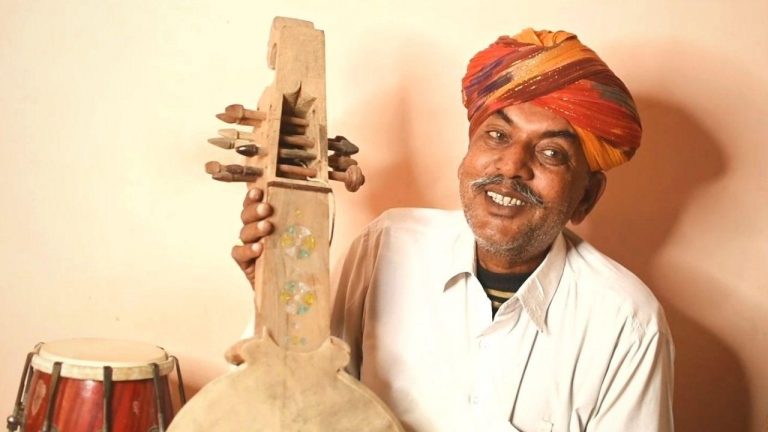
Ustad Lalu Khan Thaim, a renowned Sindhi Sarangi-maker and player from Jaisalmer says Sindhis were the first to invent this musical instrument thousands of years back.
Nasir Aijaz
“The Sindhi Sarangi was invented thousands of years back in Sindh, which slowly became famous throughout the world, and also it became a part of Indian culture,” Ustad Lalu Khan Thaim, a renowned Sindhi Sarangi-maker and player from Jaisalmer, said recently in an online interview with Rajesh Kumar Parasramani, himself an acclaimed Sindhi Sarangi player, based in Bilaspur city of Chhatishgarh state of India.
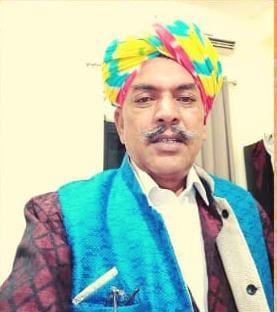 Ustad Lalu Khan was interviewed live for Studio28 Channel program ‘Zindadil’ from his Sarangi workshop located in his home in Jaisalmer, where he had placed several Sarangis, including one that had remained in use of his ancestors. The 57-year old Ustad Lalu Khan is the last of his generation who besides playing the Sindhi Sarangi, also crafts the folk music instrument whenever any order is placed.
Ustad Lalu Khan was interviewed live for Studio28 Channel program ‘Zindadil’ from his Sarangi workshop located in his home in Jaisalmer, where he had placed several Sarangis, including one that had remained in use of his ancestors. The 57-year old Ustad Lalu Khan is the last of his generation who besides playing the Sindhi Sarangi, also crafts the folk music instrument whenever any order is placed.
Tracing the history of Sindhi Sarangi, Ustad Lalu Khan quoted his maternal grandfather and his Guru Ustad Cheeme Khan. “He knew well how Sindhi Sarangi was invented and developed in Sindh. He often told that Sindhi Sarangi witnessed different phases. It had first only a single string and later some more strings were added. At a stage it had five strings, which were added two more and then finally it had nine strings when the Sarangi reached to Multan via Rahimyar Khan of present day Punjab province, where it was further developed with addition of more strings,” Ustad Lalu Khan told adding that it was from Multan that Sindhi Sarangi spread to other parts of the world.
“Nana used to call Sindhi Sarangi as ‘Sab Rangi’ (having all the colors), as according to him this instrument, born in Indus Valley, has the unique quality to warm up the soul,” he proudly told.
Ustad Lalu Khan, who is known among the very few artists in Rajasthan and probably India, who preserves, crafts and brings forward the ancient musical history of Rajasthan, hailing from the thousand-year-old traditional Jangra Shaili (style of music), and is a part of the diminishing community of instrument makers of the country.
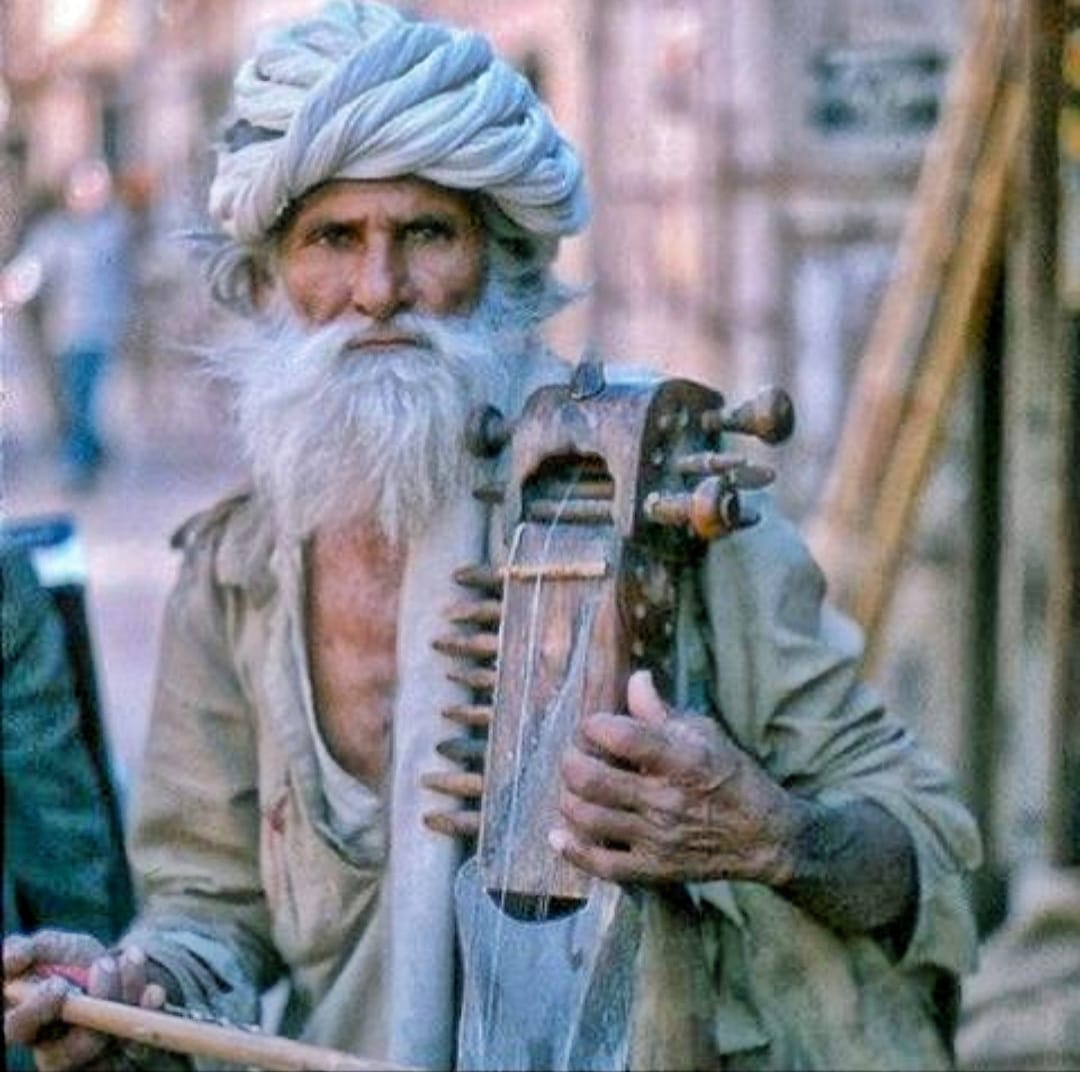
“I started learning the art of playing and crafting the Sindhi Sarangi from my maternal grandfather Cheeme Khan when I was just 12. I served my Nana with full devotion, and he was so happy to teach me this rare art – the entire process of crafting the body of Sarangi from a piece of wood to preparing strings from intestine of a goat,” he shared.
When asked, Ustad Laku Khan said, “Crafting a Sindhi Sarangi is a little bit difficult job, as it is made differently, as compared to others. First, one has to decide which kind of wood is to be used – but the Sheesham wood is the best to use for it. As per Nana’s formula, a piece of Sheesham wood measuring 7x7x27 inches is to be placed in an iron vase. Then the water and mixed with some ingredients including leaves, seed and juice of mint plant (garden mint), milk of Barr tree, home-made alcohol etc. is put on fire to boil for some time and then poured on the Sheesham wood till its fibers absorb all these elements.”
“The next phase is engraving the wood and shaping it by carving manually in a very slow process. I myself do it all measuring each part of Sarangi’s body – the head, the ribs and abdomen etc. I do not use drill machine or any other machine, as the wood would become hot if any machine is used, and lose the effect. It’s in fact the labor of love. The Sarangi has a very close relation with the heart and using the machines would bring an end to such relation. You work with love from core of your heart, and the Sarangi will resound with lovely echoes,” he elaborated.
Ustad Lalu Khan said ‘if the scale of Sur or the musical note is wrong, it wouldn’t touch the heart. The Sur matters in music, and the music is connected with the soul. “He, who doesn’t love music, he is not a human,” Lalu Khan recited a couplet from a folk poetry.
On a query, Lalu Khan revealed that the strings for the Sarangi are made from intestines but that too is a lengthy process. “After making thread like strings from intestines, they are put in the milk drawn from the Ak, a wild desert plant. Then it’s oiled with butter made from cow milk, after which the strings are dried.”
“It will take at least twenty days to craft a Sindhi Sarangi, as half the time is spent on carving it out from a piece of wood” Lalu Khan told whose book on Sindhi Sarangi and other folk Sindhi music instruments has recently been published by Dr. C. V. Raman University of Bilaspur India.
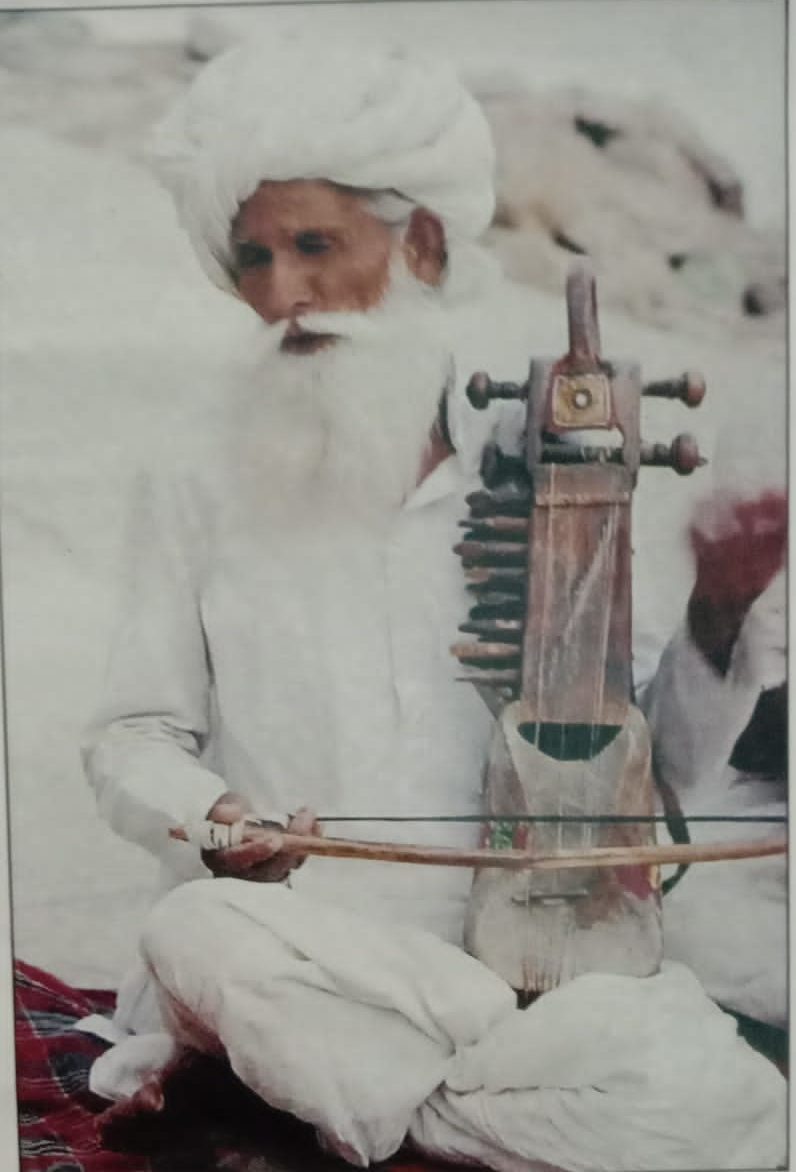
Recalling the days of his maternal grandfather, Ustad Lalu Khan said, “My Nana was a Darwish. He was a street musician and used to wander here and there playing the Sindhi Sarangi, without greed of making money. Some fifty years back, Nana Cheeme Khan also played the Sarangi in front of the Indian President Neelam Sanjiva Reddy during his visit to Rajasthan.”
Turning back to the history of Sindhi Sarangi, Lalu Khan categorically said, “It originated from Sindh, from Sindhi society. I belong to a family of Sarangi players who migrated to India from Multan and very well knew the origin of Sindhi Sarangi. The Sarangi makers in Multan had added an extra string of different kind with specific purpose calling it ‘Jorra’, while the original Sindhi Sarangi had no such ‘Jorra’. Even today, the Sarangi played by Ustad Lakha Khan of Rajasthan has 27 strings but no ‘Jorra’. It’s the identity of Sindhi Sarangi,” he told.
“The Sufi musicians of Sindh used to play Sindhi Sarangi at folk festivals and shrines. Sindhi Sarangi was also played by the Sufi musicians at the shrine of 18th century Sufi Saint Poet Rohal Fakir in Rohri while it is part of most of the songs sung by Bhagat Kanwar Ram. My grandfather and Nana often told that they used to visit Sindh to play Sarangi,” Lalu Khan told and recited a song ‘Loli’, sung by Sant Kanwar Ram, which has echoes of Sindhi Sarangi in its background.
Watch the Interview of Ustad Lalu Khan
Rajesh Kumar Parasramani, who is also the author of a book on Sindhi Sarangi and has done Ph.D. on it, and now has been appointed as the Member of Advisory Panel of Chennai Fine Arts Institution for a 2-year term, inquired about Ustad Lalu Khan’s own life, work achievement.
Ustad Lalu Khan, who also has command over playing the harmonium and Sharnai (Shahnai), had been playing Sarangi, Sharnai and other music instruments locally since childhood. He used to visit an Asthan of Sindhi community in Jaipur, where he would be rewarded with prizes. “My hard work took me to the heights of fame and played Sindhi Sarangi at national and international events; I was awarded certificates; but I remember the year 1986 when former Prime Minister Rajiv Gandhi and Super Star Amitabh Bachan visited Rajasthan and I played Sindhi Sarangi in front of them for three days. Rajiv Gandhi was so happy that he honored me with his wrist watch, which he was gifted by his in-laws. He also granted 86 residential plots for the musicians where a ‘Kalakar Colony’ was developed. Another award was given by former President APJ Abdul Kalam at Vigyan Dhawan, Delhi in 2006,” he told.
As regards crafting and selling of Sindhi Sarangi, Lalu Khan said, “I am engaged in crafting of Sindhi Sarangi since last one and half a decade. I have sold many pieces, but still it needs support of Sindhi community to promote it. For survival, Sindhi Sarangi direly needs their support and patronage.”
Lalu Khan, born on February 17, 1965, and who is third in the generation of Sindhi Sarangi-makers, has preserved a Sindhi Sarangi played by his Nana as well as his father. “My Nana Cheeme Khan passed away at the age of around sixty years while my father Dine Khan was of 65 when he died. The Sindhi Sarangi I have preserved is thus a heritage, as it’s so old and played by my elders.”
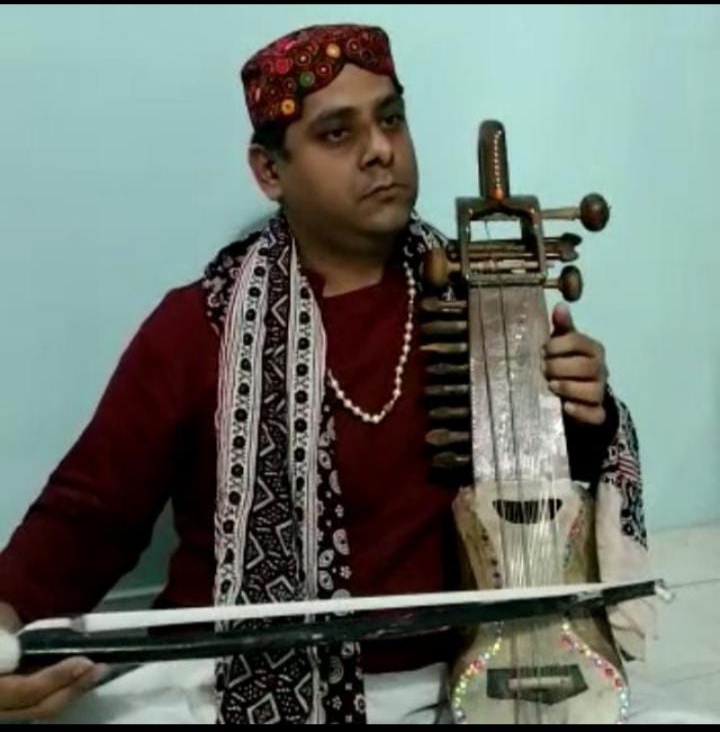
Revealing his desire to hand over this heritage to Rajesh Kumar, Ustad Lalu Khan said, “It would be proud moment for me to transfer this heritage to another renowned Sarangi player, but first I will have to renovate it.” During entire online interview, the zealous musician’s eyes beamed with pride knowing that he carries a hefty traditional history on his shoulders. Ustad Lalu Khan, in his customary turban, accustomed his abode, filled with instruments.
“People have started to deviate towards the newer styles of singing, yet I try to sing and practice these older styles of music, write about Ragas and learn about harmony and rhythm. I even give training to children of my community, make them understand the importance of this music because this is our culture, handed to us by our ancestors.”
“It is strange that people don’t know about the history of Sarangi, which is one of the basics of folk music.”
Today, Ustad Lalu Khan is an institution in himself, training the upcoming generations on his folk music, introducing his plethora of musical discoveries and rediscoveries to the world. “I have dedicated my life to Sindhi Sarangi, and would go happily anywhere if invited to play it,” he said pledged to attend the event in Bilaspur to be observed on June 27 as Sindhi Sarangi Day. This date had been fixed as Ustad Rakha Khan’s Sindhi Sarangi has 27 strings.
_________________
Nasir Aijaz is a Karachi-based senior journalist, and author of nine books.
The interview of Ustad Lalu Khan is being published in collaboration with Chanel Studio28.